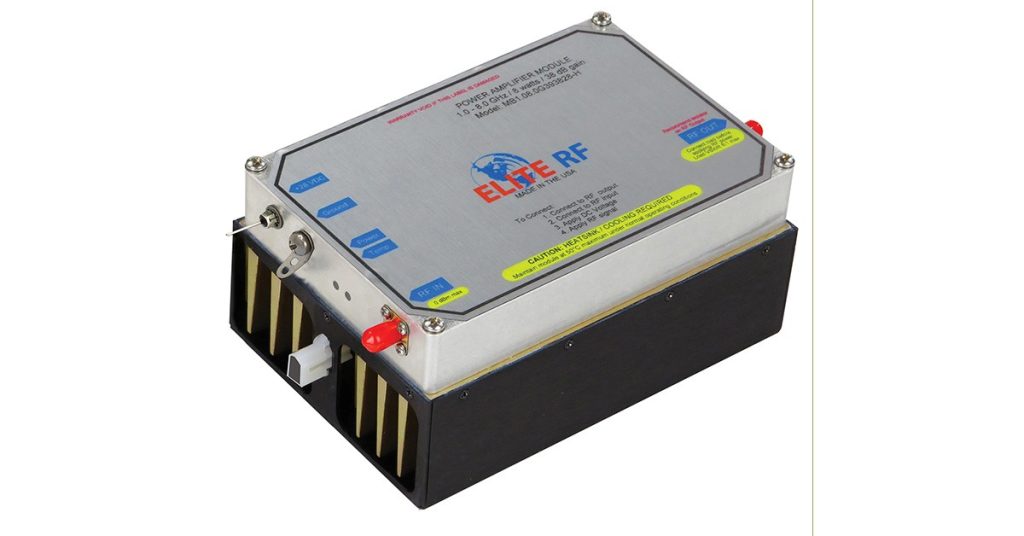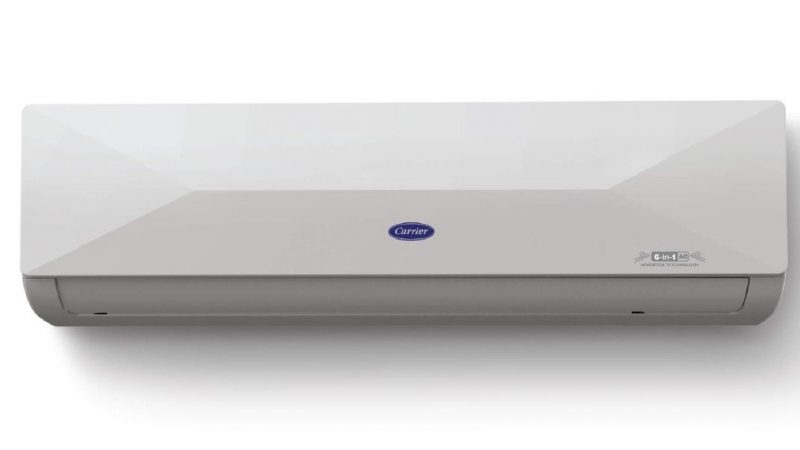Considerations for Choosing the Right RF Power Amplifier for your application

RF power amplifiers play a pivotal role in RF communication systems. Like other amplification devices, Elite RF power amplifiers enhance the signals they receive at their input. Due to the intricate modulation schemes of these signals, selecting the ideal amplifier can often pose a challenge for engineers and they have to go through comprehensive communication with their RF amplifier supplier to make sure the amplifier meets all their requirements . In this article, we will explore basic specifications/parameters to start with when making a choice concerning an RF amplifier.
Amplification / Gain
Amplifiers come with an array of specifications, but one of the most critical is Signal Gain. Gain measures the unit’s capacity to elevate an input signal, and it is typically expressed in decibels (dB). It is a logarithmic ratio of output power and input power multiplied by 10. An amplifier’s amplification varies with frequency, with increased losses typically occurring at higher frequencies and these variations are termed as small signal gain and large signal gain.
Bandwidth / Uniformity
The bandwidth is another pivotal aspect to take into account when procuring an RF amplifier. This metric refers to the range between the lowest and highest frequencies within which the amplifier provides optimal amplification. Uniformity, on the other hand, pertains to the consistency of the amplifier’s amplification across its entire operational bandwidth.

Linearity
Linearity is a very important parameter to be considered depending on the application. Linear RF Amplifiers amplify the input signals by the same factor (proportion) till it reaches output compression at 1dB point.
One dB Compression (P1dB)
When an amplifier reaches the compression region, it can no longer provide similar amplification, and its gain response levels off. The one dB compression point is a position on the linear response curve, situated one decibel below the point where the amplifier’s gain saturation becomes non-linear.
Maximum Input and Output Power
The maximum input and output power handling capabilities of an RF amplifier should be taken into account during the selection process. Exceeding the input power level can lead to damage, especially when multiple amplifiers are used in succession. The output power of the amplifier must meet the application’s requirements after considering losses and uniformity across the operational bandwidth. Maximum output power or Saturated Power is the maximum output RF power (expressed in dBm or Watts) that an amplifier can generate no matter how much the power of input signals is increased.
Impedance
When dealing with system applications that involve networking and transmitting antennas, impedance becomes a crucial consideration. In most instances, amplifiers are engineered for 50-ohm impedance. A mismatch in impedance can lead to power reflection, losses, and damage to components.
Harmonics
Undesirable signals, often referred to as harmonics, are unwanted duplications of operating frequencies. These signals tend to interfere with the system by mixing with others, resulting in additional intermodulation distortion. Although complete isolation is challenging, various design methods can help suppress these unwanted signals.
The Third Order Intercept Point (TOI)
The TOI, or third order intercept point, is a theoretical value in a linearity diagram. Third-order components of a signal are generated during the amplification process. As an amplifier reaches its saturation point, its amplification diminishes. Beyond this point, if input power continues to rise, the third-order and fundamental signal powers will converge at the TOI. This calculation is used in the design phase to assess an amplifier’s non-linearity behavior.
Adjacent Channel Rejection Ratio (ACLR)
In many scenarios, a portion of transmitted power spills over into adjacent channels due to intermodulation distortion, even when the power is transmitted through the intended channel. ACLR measures the ratio between transmitted power and that measured in adjacent channels. This is especially vital in modern wireless communication systems like LTE, where signals traverse multiple channels within allocated bandwidth. In some cases, amplifiers must also accommodate modulated signals.
Noise Figure
The noise figure represents the difference between an amplifier’s input signal-to-noise ratio and output signal-to-noise ratio. A lower noise figure indicates better performance. Noise figures are always greater than one because the output signal-to-noise ratio surpasses the input SNR.
Peak-to-Average Power Ratio
This measurement reflects the ratio between an amplifier’s peak and average signal power levels.
Power Consumption and Physical Dimensions
When choosing an RF amplifier, the physical size should be considered. Amplifiers vary in size, ranging from a few millimeters to several meters in height and width. Your choice should align with the application and environment in which it will be used.
RF amplifiers generate substantial heat during operation, necessitating a proper cooling mechanism. The cooling is done by circulating air using fans in a heatsink or by circulating cold water through pipes near the hot spot region. Additionally, an amplifier’s power consumption is a critical factor to take into account, especially for high-power models, which may require significant external cooling and AC power.
All things considered, the selection of an RF power amplifier hinges on various factors, many of which have been elucidated above. Manufacturers’ data sheets typically provide an amplifier’s specifications. Ensuring a proper match is essential for efficient signal transmission and reception. By considering the factors outlined in this article, users can identify RF amplifiers that meet the requirements of their specific applications. For further information on power amplifiers and how Elite RF can assist you, please visit our website www.eliterfllc.com.






